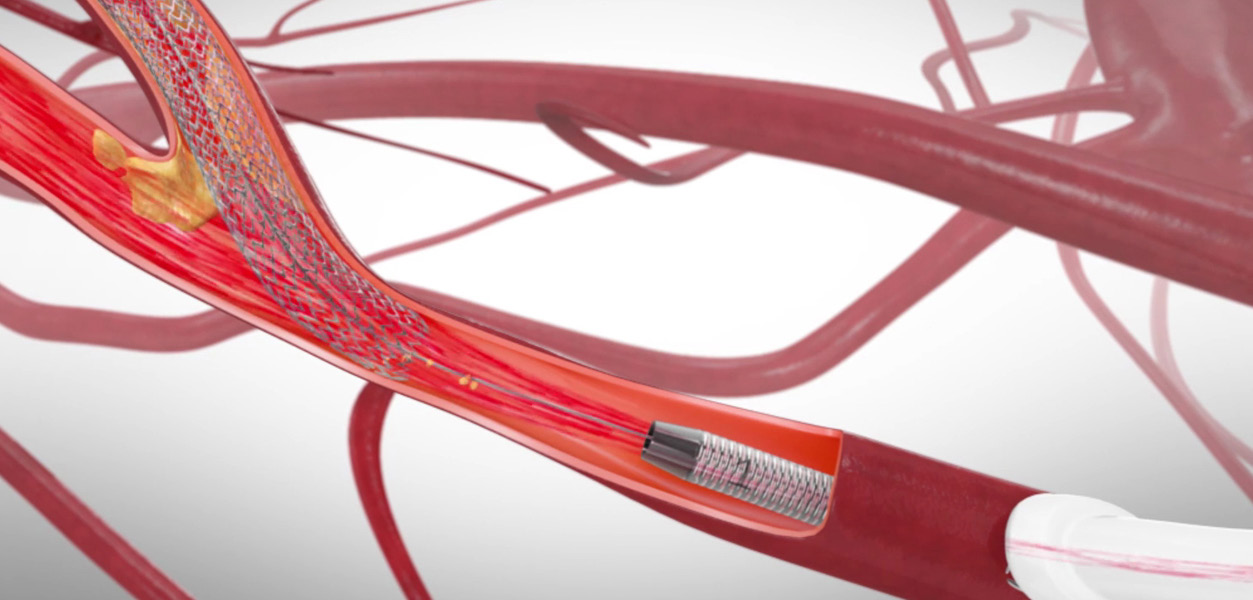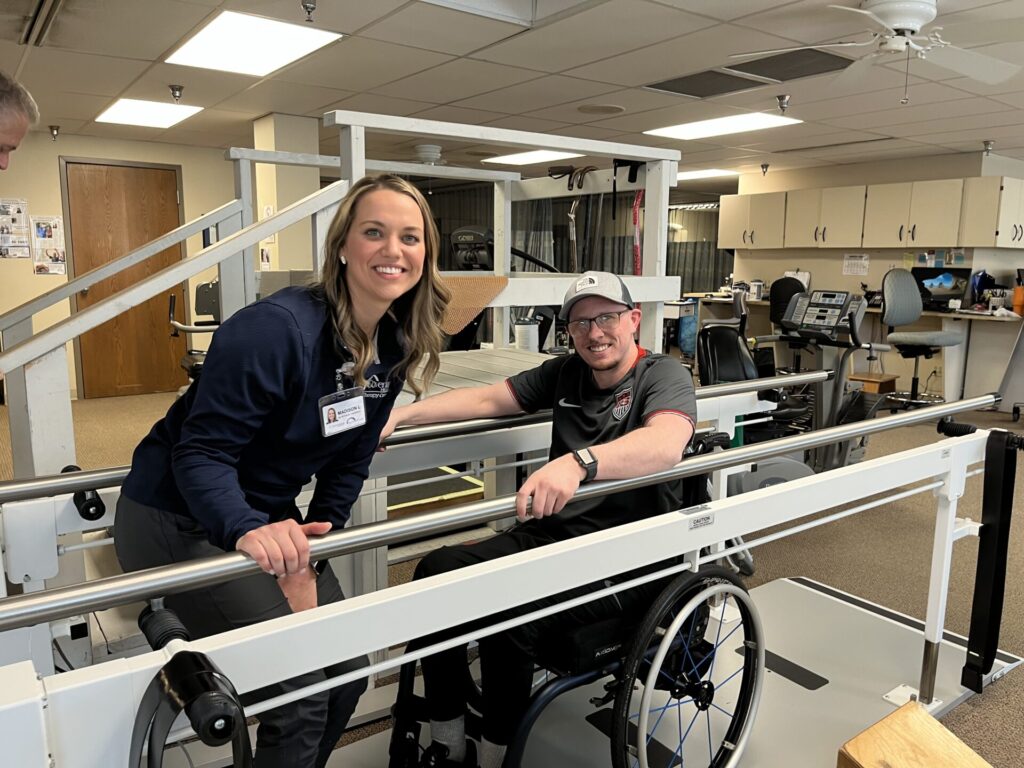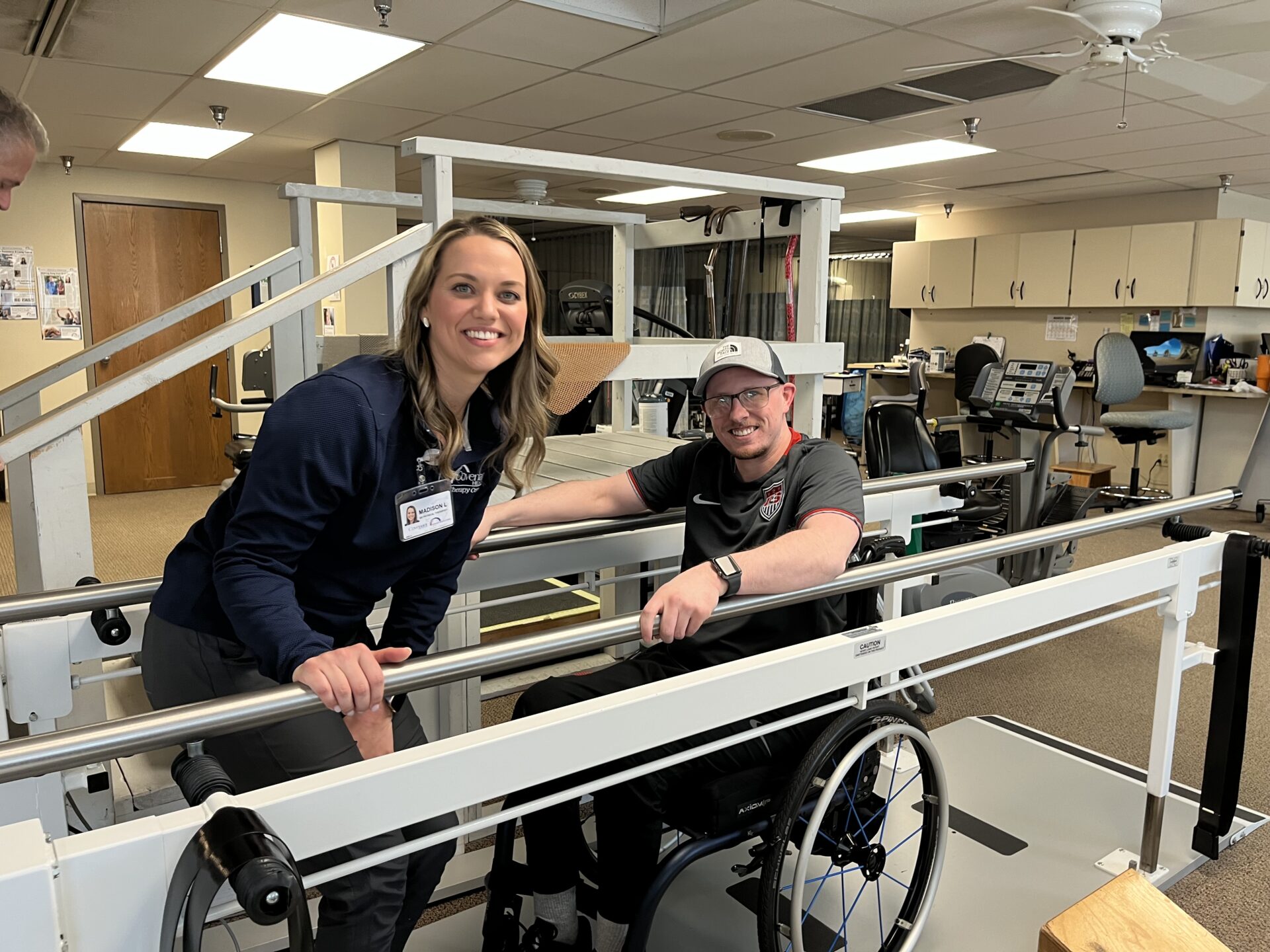- Find a DoctorDoctors by Specialty
- Cardiac Electrophysiology
- Cardiology
- Colon & Rectal Surgery
- Family Medicine
- Gastroenterology
- General & Vascular Surgery
- Gynecological Oncology
- Gynecology
- Infectious Disease
- Internal Medicine
- Interventional Cardiology
- Interventional Radiology
- Nephrology
- Neurology
- Neurosurgery
- Obstetrics & Gynecology
- Oncology
- Oncology & Hematology
- Orthopedic Surgery
- Otolaryngology
- Perinatology
- Psychiatry
- Pulmonary Medicine
- Radiation Oncology
- Rheumatology
- Sleep Medicine
- Thoracic Surgery
- Urology
- View All Doctors
- Our ServicesMedical Services
- Bariatric Services
- Behavioral & Mental Health
- Breast Care
- Cancer Care
- Critical Care
- Ear, Nose, & Throat
- Emergency Services
- Gastroenterology
- Glossary
- Heart Care
- Home Care
- Hospice & Palliative Care
- Imaging & Diagnostics
- Long-Term Care
- Nephrology
- Orthopedics
- Primary Care
- Rehabilitation Therapies
- Robotic-Assisted Surgery
- Sleep Services
- Spine Care
- Stroke Care
- Surgery Services
- Telehealth Services
- Urology
- Urgent Care
- Virtual Urgent Care
- Women’s Services
- Wound Care
- Our Locations
- Patients & Visitors
- About Us
Innovation Intervention at Parkwest Has Smooth Results
Diagnosed with carotid artery disease and peripheral artery disease, Pigeon Forge resident Doris Dixon often experienced skyrocketing blood pressure and could feel her heartbeat pounding in her ears. After feeling tightness in her chest, she was referred to Scott Callicutt, MD, a vascular surgeon at Parkwest Medical Center.

Arterial disease occurs when plaque builds up over time in the arteries, preventing adequate blood flow to various parts of the body. Dr. Callicutt determined that she had severe 90 percent carotid stenosis, leaving her at high risk of stroke.
Dr. Callicutt recently performed a “textbook perfect” carotid artery surgery on Dixon, who says she couldn’t have had better people caring for her at Parkwest. “In the middle of a pandemic, they took care of me, even making me hot tea.” Dixon was impressed with Dr. Callicutt’s confidence and explanation of everything that would happen. “I’ll put it this way,” she says. “No one else will touch an artery of mine except him.”

During Dixon’s stent surgery, Dr. Callicutt used a new method called Transcarotid Artery Revascularization, or TCAR. During the procedure, the direction of blood flow is reversed so that blood and stroke-causing plaque flows away from the brain while the physician places the stent. After the stent is placed successfully, the
flow of blood is reversed, resuming its normal direction. Dr. Callicutt says Dixon’s age and anatomy made her an excellent candidate for the TCAR procedure. Dr. Callicutt says Dixon was at risk of a having a stroke and experiencing other complications, such as losing her vision, ability to speak or possible paralysis.
Dr. Callicutt explains, “Thanks to the evolution of this technology, with this procedure we are able to stent the carotid artery more safely than we’ve been able to do before, which protects the patient and reduces the risk of a stroke.” To her surprise, Dixon did not experience any pain following her procedure. “I had wonderful
results, and recovery was easy,” she says. She spent one night at Parkwest after her procedure and was moving around the Dixon says she got a new smartphone at about the same time, and “compared to [learning] the phone, surgery was a breeze!” she laughs.

Dixon’s labs are normal and she no longer has to take prescription medications for her condition. She is able to tend her flower gardens, which fill her with great pride. “I’m a fixer and like to make things pretty. I like to watch plants grow and nurture them.” She expresses tremendous gratitude for the entire team of medical professionals who cared for her, especially Dr. Callicutt. “He is exceptional, and so is everyone he’s connected with.”
Working Out the Kinks
Dr. Callicutt is passionate about helping his patients solve lifelong problems, not just providing a temporary solution. He compares a blocked artery to a kink in a garden hose, stopping the flow and preventing the hose from delivering water to the grass. The three highest risk factors for carotid or peripheral artery disease are diabetes, hypertension and smoking. As with any disease
or chronic condition, doctors monitor patients with symptoms and recommend lifestyle habits such as not smoking and eating a healthy diet. The American Heart Association also recommends 30 minutes of exercise at least three times per week for those who are physically able.
To learn more about vascular services at Parkwest Medical Center, visit TreatedWell.com.
What are the Symptoms of Carotid Artery Disease?
The disease may have no symptoms. In some cases, the first sign of carotid artery disease is a transient ischemic attack (TIA) or a stroke. A TIA is a sudden, short-term loss of blood flow to a part of the brain. It usually lasts a few minutes to an hour. Symptoms go away
fully within 24 hours and there are no lasting effects. If symptoms continue, the person is having a stroke.
The symptoms of a TIA and stroke are the same. Symptoms of a TIA or stroke may include:
- Sudden weakness or clumsiness of an arm or leg on one side of
the body - Sudden paralysis of an arm or leg on one side of the body
- Loss of coordination or movement
- Confusion, loss of ability to concentrate
- Dizziness, fainting or headache
- Numbness or loss of feeling in the face or in an arm or leg
- Temporary loss of vision or blurred vision
- Inability to speak clearly or slurred speech
If you or a loved one has any of these symptoms, call for medical help right away. A TIA may be a warning sign that a stroke is about to occur. But TIAs don’t precede all strokes.
A stroke is loss of blood flow to the brain that lasts long enough to cause brain damage. Brain cells start to die after just a few minutes without oxygen. The effects after a stroke depend on the size and place in the brain that had loss of blood flow and may include problems with:
- Moving
- Speaking
- Thinking
- Remembering
- Bowel and bladder function
- Eating
- Emotional control
- Other vital body functions
Recovery also depends on the size and place of the stroke. A stroke may result in long-term problems, such as weakness in an arm or leg. It may cause paralysis, loss of speech, or even death. The symptoms of carotid artery disease may look like other health problems. See your healthcare provider for a diagnosis. To find a Parkwest physician, visit TreatedWell.com/physicians.
What is Artery Disease?
The carotid arteries are the main blood vessels that send blood and oxygen to the brain. When these vessels become narrowed, it’s called carotid artery disease. It may also be called carotid artery stenosis. Similar to CAD, peripheral artery disease is a narrowing of the peripheral arteries serving the legs, stomach, arms and head. The narrowing is caused by atherosclerosis. This is the buildup of fatty deposits, calcium, and other things inside the artery. Carotid artery disease is like coronary artery disease. In that disease, build-up occurs in the arteries of the heart, which can cause a heart attack.
























